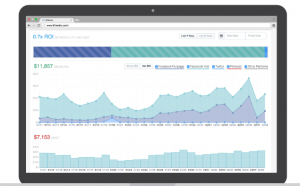Everyone says “Content is King” and really, it is for all of your digital efforts, but that doesn’t necessarily mean you need to do all the work! We think social media is for sharing and that includes content! If you see good content, leverage it! Here are 4 simple steps for content curation to amplify your existing digital efforts:
- Get Set Up! This includes searching out industry news sites, blogs, partners and affiliates and putting together an RSS feed. There are many great tools out there such as feedly, storify, flipboard and of course is integrated into many social management software. In addition, we would recommend creating a twitter list to easily see their content on a daily basis.
- Determine what’s relevant. Although you will see tons of great content, you can’t overwhelm your readers and followers. If you are unsure how many posts you should share per day, try using a tool such as LiftMetrix with custom recommendations including number of posts per day. It’s important to decide what’s relevant to your users and what you want to share. In addition, make sure you have an opinion on things you share as well. Again think about using tools or analytics to see how your users engage and leverage your entire team to come up with a list of requirements to decide relevant content.
- Prepare to share
 When sharing content, not only do you want to get it out but also add your opinion or a reason to share. Either write your opinion within your social copy or add more through your blog, but always, always give credit to the original author including linking or tagging on social.
When sharing content, not only do you want to get it out but also add your opinion or a reason to share. Either write your opinion within your social copy or add more through your blog, but always, always give credit to the original author including linking or tagging on social. - Organize and Track! This is always the end of any process…but maybe the most important. When posting and tracking, add keywords or tags and understand what types of content are working the best with your audience. From there adjust your strategy from #1 based on your findings. Within LiftMetrix you can add tags to posts and then receive insights and recommendations based on these keywords.
There are tons of great tools out there to help with your content curation, scheduling and posting, such as one of our partners Hootsuite. See our blog post on the integration here. We’d love to hear which ones you use and prefer in the comments below!

